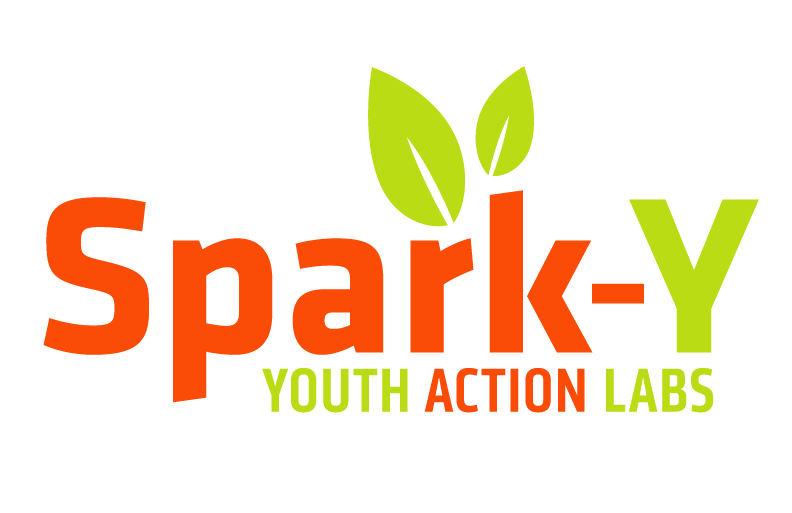The following blog post was written by Matthew Kolasny, Sustainability Educator AmeriCorps.
Matthew Kolasny at Roosevelt’s indoor aquaponics system.
At Roosevelt High School in South Minneapolis, I have the honor of participating in and helping lead a daily high school course that exposes students to principles of sustainability, entrepreneurship, and environmental justice through urban farming. Our class is different from most I’ve known before. Our students, neither bound to a single classroom nor reducible to their performance on a final exam, help care for the sustainable systems Roosevelt Urban Farm (RUF) has in place. These include several aquaponics systems and outdoor growing spaces, equipped with raised beds and a greenhouse, where we produce food for our school’s cafeteria, not to mention a couple vermicomposting towers which help produce fertilizer for our farm. Our class encourages students to participate and interact with one another, to follow their natural curiosities, and to take part in the design and direction of the course. RUF broadens students' views of what “class” can be and encourages them to consider learning as a living, interactive process.
Roosevelt youth harvesting produce from their raised beds.
In a daily high school program, it doesn't take all that long to list the environmental benefits of aquaponics or recite the 5Es of sustainability, counting them off one by one on our fingers. Eventually, we've got to find more to talk about, and while a considerable amount of our time is spent tending to our farm, we have also studied plant and seed biology, native and indigenous farming practices and values, and labor issues amongst farm and food service workers. In my role, I try to continuously emphasize that sustainability is not measured only by how many gallons of water we save or how many pounds of waste we eliminate. Sustainability is a way of viewing and behaving in the world which acknowledges limitations and asks us how we can thrive in recognition of them. Because of this, I encourage the students I work with to consider all of what we do and study in a context of sustainability, guiding our thoughts and reactions to what we learn. We have found that there are opportunities to think and act sustainably all around us.
Aquaponics has proven to be a fascinating learning tool through which we have considered these ideas. As winter drags onwards and the icicles outside our greenhouse windows seem only to grow longer, students are drawn to the warm space lush with green plants and the rippling sound of water moving in peace. Our aquaponics space is entirely separate from our everyday classroom, not even on the same floor of the building. In a typical week, we only visit the space once or twice. After learning about the fundamental biological processes at hand, however, and learning that aquaponic structures can be scaled to almost any size the designer is willing to work toward, our students’ question was simple:
“Why don’t we have a system in our classroom?”
After that, we built two.
Utilizing some of Spark-Y’s designs and equipment and with fish tanks we were able to acquire from the school district we built two, ten-gallon aquaponic systems which have now been cycled and planted with Roosevelt heirloom cilantro, seeds recovered and saved by last year’s students and started by this year’s.
When students have the opportunity to test their skills and interests in areas many of them have previously not ventured into, they ask questions and make observations in ways that have previously not occurred to them. Why else should a bunch of teenagers from the city care enough to learn about farming or aquaponics? To me, the answer is not necessarily about creating the next generation of sustainable farmers. Instead, I believe it’s about helping students activate their natural capacities, their curiosities to problem-solve and innovate. The moments in which I myself feel most empowered are those when I am able to connect with students somehow, when I'm able to get them to smile and take interest in what we are learning, and when they treat me as though it is worth it to them to have me and our class in their lives. They want to know what we can do to help them today before they care about how we are here to save the world tomorrow. My work with these students has shown me that once we are able to show this kind of commitment to them, they are more likely to extend that commitment to others and to the world around them.







